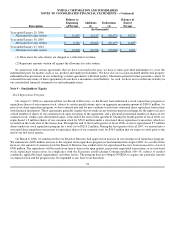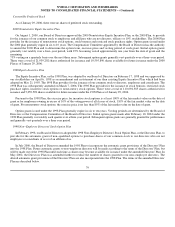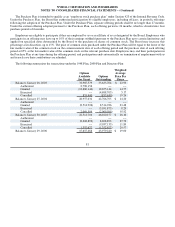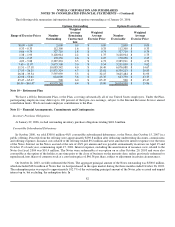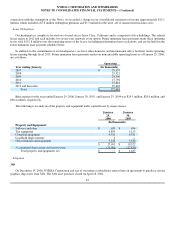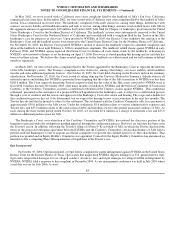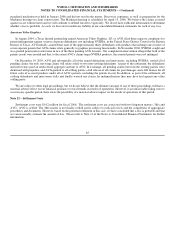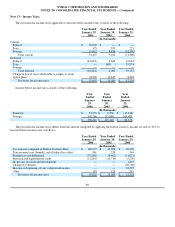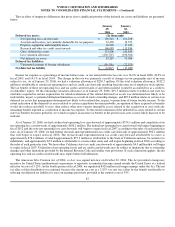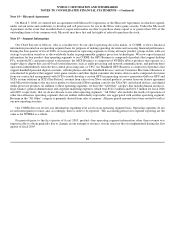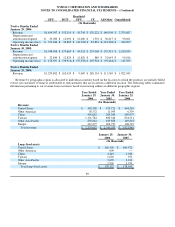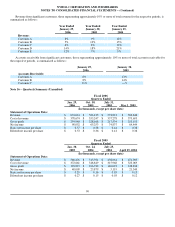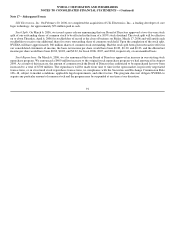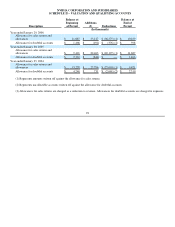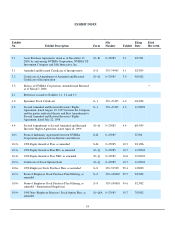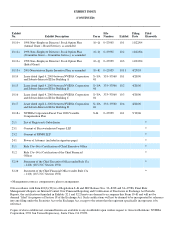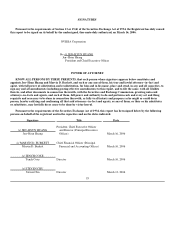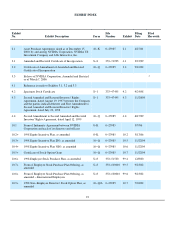NVIDIA 2006 Annual Report Download - page 96
Download and view the complete annual report
Please find page 96 of the 2006 NVIDIA annual report below. You can navigate through the pages in the report by either clicking on the pages listed below, or by using the keyword search tool below to find specific information within the annual report.
NVIDIA CORPORATION AND SUBSIDIARIES
NOTES TO CONSOLIDATED FINANCIAL STATEMENTS − (Continued)
Note 14 − Microsoft Agreement
On March 5, 2000, we entered into an agreement with Microsoft Corporation, or the Microsoft Agreement, in which we agreed,
under certain terms and conditions, to develop and sell processors for use in the Xbox video game console. Under the Microsoft
Agreement, in the event that an individual or corporation makes an offer to purchase shares equal to or greater than 30% of the
outstanding shares of our common stock, Microsoft may have first and last rights of refusal to purchase the stock.
Note 15 − Segment Information
Our Chief Executive Officer, who is considered to be our chief operating decision maker, or CODM, reviews financial
information presented on an operating segment basis for purposes of making operating decisions and assessing financial performance.
During the first quarter of fiscal 2006, we reorganized our operating segments to bring all major product groups in line with our
strategy to position ourselves as the worldwide leader in programmable graphics processor technologies. We now report financial
information for four product−line operating segments to our CODM: the GPU Business is composed of products that support desktop
PCs, notebook PCs and professional workstations; the MCP Business is composed of NVIDIA nForce products that operate as a
single−chip or chipset that can off−load system functions, such as audio processing and network communications, and perform these
operations independently from the host central processing unit, or CPU; our Handheld GPU Business is composed of products that
support handheld personal digital assistants, cellular phones and other handheld devices; and our Consumer Electronics Business is
concentrated in products that support video game consoles and other digital consumer electronics devices and is composed of revenue
from our contractual arrangements with SCE to jointly develop a custom GPU incorporating our next−generation GeForce GPU and
SCE's system solutions in SCE's PlayStation3, revenue from sales of our Xbox−related products, revenue from our license agreement
with Microsoft relating to the successor product to their initial Xbox gaming console, the Xbox360, and related devices, and digital
media processor products. In addition to these operating segments, we have the “All Other” category that includes human resources,
legal, finance, general administration and corporate marketing expenses, which total $121.2 million and $101.5 million for fiscal 2006
and 2005, respectively, that we do not allocate to our other operating segments. “All Other” also includes the results of operations of
other miscellaneous operating segments that are neither individually reportable, nor aggregated with another operating segment.
Revenue in the “All Other” category is primarily derived from sales of memory. All prior period amounts have been restated to reflect
our new reporting structure.
Our CODM does not review any information regarding total assets on an operating segment basis. Operating segments do not
record intersegment revenue, and, accordingly, there is none to be reported. The accounting policies for segment reporting are the
same as for NVIDIA as a whole.
For periods prior to the first quarter of fiscal 2005, product−line operating segment information other than revenue was
impracticable to obtain primarily due to changes in our enterprise resource system structure that we implemented during the first
quarter of fiscal 2005.
88


